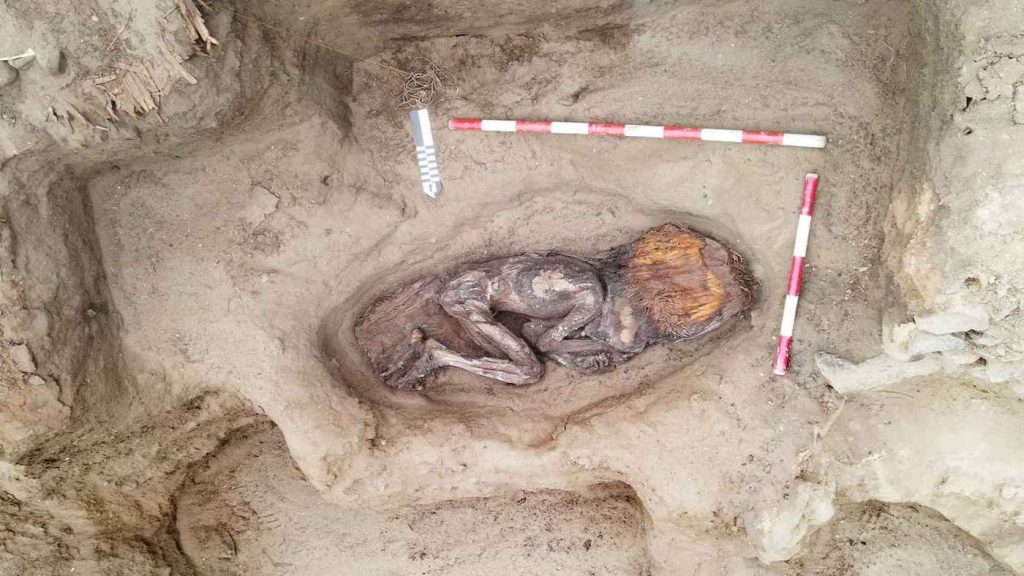Sure! Here’s a heartwarming retelling of the story:
What if every archaeological discovery opened a window into a world long past, revealing the lives and stories of those who came before us? A remarkable find in Peru recently brought such a narrative to light, offering a glimpse into the rich tapestry of the Caral civilization and the extraordinary life of an elite woman.
Deep in Áspero, an ancient coastal city of the Caral civilization, a team of archaeologists has unearthed a burial site that ignited excitement and wonder. This wasn’t just any find; it was the resting place of a young woman who lived between 3000 and 1800 BCE. She was laid to rest within the revered Huaca de los Ídolos, a ceremonial building that stands at the heart of her community.
Led by the passionate Ruth Shady Solís from the Ministry of Culture, the excavation revealed not just skeletal remains, but artifacts that spoke volumes about her elevated status. Wrapped in intricately woven textiles, she was surrounded by delicately crafted items, showcasing the artistry of her time. A stunning headdress adorned her head, intricately designed with fibers and wrapped threads—a beautiful ornament that had remained untouched for 4,500 years.
When we think of great ancient civilizations, names like the Aztec, Inca, and Maya often capture our imagination. Yet, the Caral-Supe civilization deserves a spotlight of its own. Thriving long before pottery was even invented, they created magnificent architectural structures from quarried stone, laying foundations that would influence generations.
The ministry’s announcement emphasized the significance of this discovery. The young woman’s burial included items pointing to her elite position. Among the treasures were cotton fabrics and a breathtaking panel embroidered with vibrant macaw feathers, representing one of the earliest examples of feather art in the Andes.
But there was more beneath the surface. Close to her resting place, other elite burials from the past, like the “Lady of the Four Tupus” and an “Elite Male,” suggested a shared cultural legacy, weaving connections across time and space. It painted a picture of a society that flourished through trade and interaction, as evidenced by unique items found with the young woman, including sweet potatoes and intricate animal remains, showcasing the diversity of their resources.
The location of the Áspero settlement, a short distance from the Pacific Ocean, spans over 30 acres filled with 22 architectural complexes. It’s no wonder this site has earned recognition as a UNESCO World Heritage Site. It symbolizes the resilience and ingenuity of ancient cultures, and every layer of soil unturned reveals a story waiting to be told.
In discovering this elite burial, we not only honor the life of this young woman but also celebrate the rich heritages that shaped human civilization. As we learn from these archaeological marvels, we’re reminded of the timeless connections that bind us across millennia and the incredible stories of those who walked this earth long before us.
SHARE this inspiring discovery with your friends who appreciate the wonders of ancient civilizations!
If you would like to see similar good news stories click here & Share this to brighten someone’s day.






